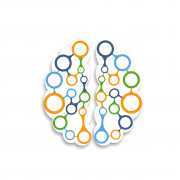The brain and primitive reflexes (part 1)
It is not automatic for all health professionals involved in improving the function of the muscular system to check whether primitive reflexes are integrated. Many of them think that if one stands up, it is because these reflexes are, in fact, integrated.
That being said, these same specialists often have trouble explaining why we find postural imbalances. Some even say that these imbalances matter little, because the literature has not been able to clearly demonstrate that imbalances of any kind are considered problematic.
They will say: the body is resilient and it can adapt. We can read them, quoting the example of Usain Bolt, since he has become the fastest man in the world, while managing a scoliosis.
Does this mean that there is no relation between preserved primitive reflexes and motor / cognitive abilities?
Take ADHD, for example. It is estimated that 10% of all American children suffer from it. Researchers Tannock and Schachar note, “there seems to be a growing consensus that the fundamental problems of ADHD are related to self-regulation and that ADHD is better conceptualized as impairing executive functions. These reside mainly in the frontal lobes”.
So, how do we develop the frontal lobes?
On the one hand, the frontal lobes have the primary function of creating complex movements. According to Llinaes, a brain and a nervous system are needed only for multicellular creatures capable of orchestrating and expressing active movement.
By interacting with our environment, we develop our sensory system. This activates the brain and allows it to create strategies to manage this input. The strategy is the output and it is, indeed, the engine.
It is by inhibiting primitive reflexes that we activate the frontal lobes. The frontal lobes project descending inhibitory projections of the cortico-spinal tract, reflecting the maturation and growth of the frontal lobe and sensory motor cortex.
The presence of these reflexes is a common feature in children with neurobehavioral disorders such as ADHD.



Leave a Reply